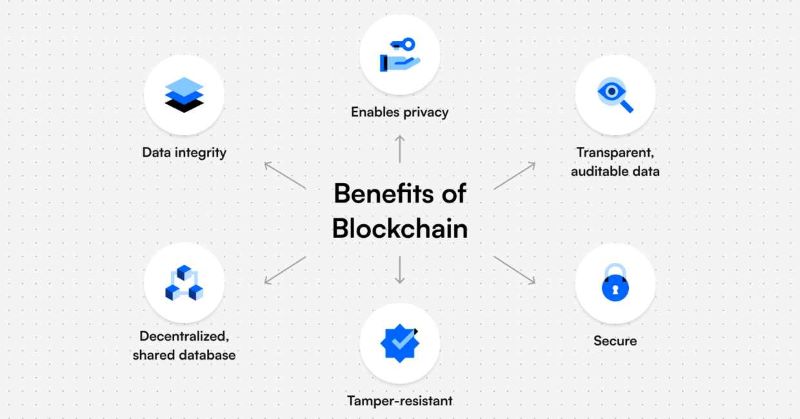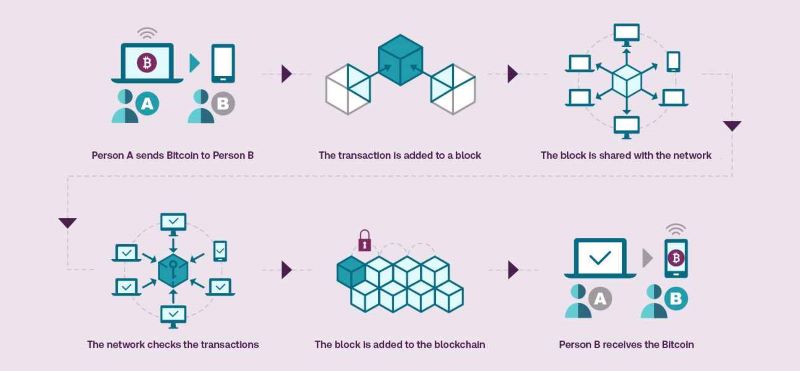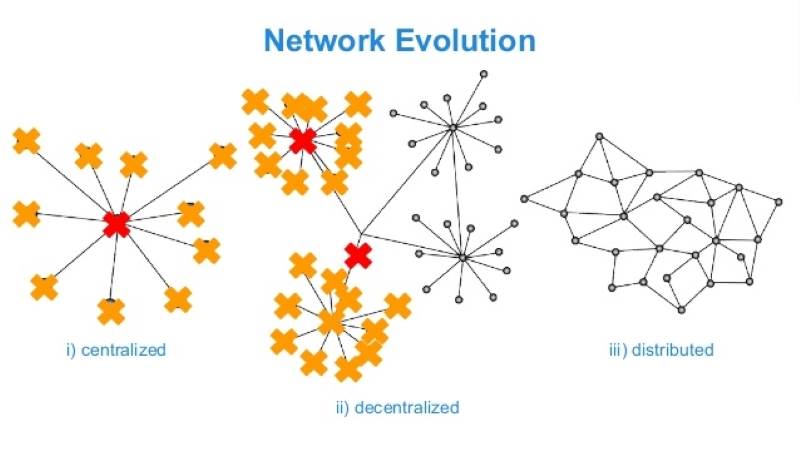Predictions about the future of blockchain security promise a tech revolution, with ramped-up safeguard strategies on the rise. We’re peeling back layers of buzz words and tech jargon to lay out the solid, no-nonsense future of blockchain security. Imagine a world where your digital assets are safer than ever; now let’s explore how we’re steering into that reality. Get ready to dive into the new era of cyber fortresses—with smart contracts and quantum defiance paving our path.
The Rising Complexity of Blockchain Threat Landscape and Cybersecurity Measures
Understanding the Emerging Cryptocurrency Security Challenges
The world of blockchain is always changing. New dangers pop up often. These are tough times for those who own crypto. We’re seeing more tricks by hackers than ever before. But don’t worry, experts like me are in the fight. We stay up-to-date and teach others how to protect their digital coins.
A big threat is phishing. People can lose their crypto if they’re not careful. We tell people how to spot and avoid these traps. It’s not just about one person, though. Whole systems are at risk. Sometimes, even the best blockchains face attacks.
To keep crypto safe, we must check for weak spots often. A chain is only as strong as its weakest link. After we find problems, we fix them fast. This keeps blockchain security tight.
Staying Ahead of Quantum Computing to Secure Blockchain Assets
Quantum computing could break blockchain codes. But hold on, it’s not that simple. This tech is still new and rare. Experts like me watch this stuff closely. We make plans to defend against quantum threats when they become real.
Decentralization helps us a lot. This fancy word means spreading out info. By doing this, we make it harder for bad guys to hurt blockchain. Also, we’re making new codes that are too tough for quantum computers to crack. This gives us a shield against those future super machines.
We have a trick up our sleeve too. It’s called zero trust. It means check everything, trust no one. With this trick, we make sure nobody gets in unless they’re supposed to.
Now, it’s not just about staying safe. We want to stay quick and easy to use too. Balancing safety and speed is tough. But hey, that’s what makes us security types excited about coming to work.
My job is to watch over blockchain. I try to keep it safe so you don’t have to worry. This stuff gets complex, but remember, there’s a team of us always on guard. We’re the unseen heroes fighting to keep your crypto safe. We learn every day and share our smarts with you. That way, we all stay one step ahead of the bad guys.
Enhancing Protection through Smart Contract Protocols and DLT Security
From Concept to Code: Advancing Smart Contract Security Measures
Smart contracts are like the robots of blockchain. They work on rules to move money. Yet, bad guys find ways to trick them. We check for holes to keep them out, much like fixing a bike tire.
Let’s fight smart contract tricks. We write better rules – smart ones. We aim for no gaps, so no money gets lost. Our plan is simple but strong. Think of it as building a fort. You add tall walls and deep moats. It keeps attackers away. We add checks and balances in code.
Future smart contracts will be like forts. They will have many tests to pass before they can work. Think of it like a videogame. First, it’s a concept with lots of ideas. Then, it turns into a game that’s hard to beat.
Quantum computers are strong. They can break codes. But blockchain builders like us are on it. We make new locks for our blockchain forts, which even quantum can’t pick.
The Future of Decentralization: DLT Innovations and Security Enhancements
DLT stands for “distributed ledger technology.” It’s a fancy way of saying “shared record book” that no one owns. It’s like a magic book that everyone can write in, but no one can erase.
Decentralization means no one person is in charge. It’s like a classroom with no teacher. But, of course, things need to stay safe. So we’re working on cool ideas to protect everyone’s stuff.
We use DLT to spread data wide. It’s hard to hack when things are not in one spot. It’s like having your toys all over the house. If someone takes one, you still have lots left.
Our goal is to make sure all toys (or your data) are safe. We create new ways to lock up our magic book. We even learn from others, like when friends show us new hiding spots.
We also look at tech trends, spotting risks fast. It’s like having a weather forecast for safety. We see problems coming and plan ahead.
In terms of cyber threats, we keep our eyes open. We quest for signs of danger to shut it down quick. We’re always on guard, like knights protecting a castle.
We balance being fast with being safe in blockchain. Just like riding a scooter, you want to go fast but not crash. We look for ways to zoom ahead but still have our pads and helmet on.
And as the world changes, we follow the rules. Think of it like getting the newest video game update. We stay in the game and play safe.
For now and the future, it’s about keeping you and your stuff safe. We’re like the superheroes of blockchain. Always ready, always working for a safer digital world.
Incorporating Advanced Defense Mechanisms in Blockchain Networks
The Role of Zero Trust in Strengthening Blockchain Security
Zero trust is a must in today’s cyber world. It means trust no one, always verify. For blockchains, this approach is gold. It tightens security like no other. Here’s what it fixes: access risks and inside threats. By limiting who gets in and what they can see or do, zero trust keeps blockchain data safe. This is a game-changer for protecting our crypto assets and smart contracts from sneaky cyber strikes.
This no-trust approach also means constant checks. Every bit of data trying to make its way through the system gets scanned. If it’s bad, it’s blocked on the spot. Think of it as a never-sleeping guard dog for our digital assets. Every user, every device is a new guest who must prove they’re no threat. Now, that’s a security step we can all feel good about.
Evolving Threat Intelligence and Its Impact on Blockchain Ecosystems
Threat intelligence is our crystal ball. It helps us see the bad before it hits. With blockchain, staying ahead is everything. Hackers are clever, but with smart intel, we’re one step ahead. Now, we’re not just fixing holes. We’re predicting them. And when we predict, we prevent.
Blockchain now faces risks from all corners — hackers, faulty code, even our own devices. But with fresh intel, we’re ready. Imagine knowing the moves of a thief before they even get to the door. That’s what good threat intelligence does for blockchain. Plus, it adapts. Today’s sneaky trick won’t work tomorrow. We keep learning, our defenses keep growing.
Smart threat intelligence means our blockchain is no easy target. It guides us on where to look and what to fix. No guesswork, just action. And we’re not just fighting today’s battles. We’re gearing up for what’s next. Even quantum computing, a beast of a challenge, is on our radar. With threat intel, our blockchain isn’t just surviving; it’s thriving.
Be on the lookout; blockchain security is leveling up. Zero trust and sharp threat intelligence are leading the charge. It’s a bright future for blockchain defense, and we’re just getting started.
Achieving Resilience against Expanding Threat Vectors in Blockchain
Risk Assessments and Best Practices in Blockchain Security
As an expert, I see security risks in blockchain grow daily. Hackers get smarter, so we must too. To stay safe, we do something called a blockchain vulnerability assessment. This is like a health check for the blockchain. It finds weak spots before bad guys do.
First, we check the whole system, think like hackers, and spot holes in the system’s armor. Then, we drum up a solid set of rules for everyone to follow. These are the best practices in blockchain security.
These best practices are simple steps. They guide us in setting up safe systems. Following them, we can make sure the bad actors have a hard time breaking in. This can range from having safer passwords to more complex things, like making sure the software we use is bulletproof.
Now, smart contracts are vital in blockchain. They’re like robot promises that always do what they’re told. But sometimes, they can have bugs. That’s bad news. So, we improve the smart contract protocols. This means teaching the robots to double-check their work. If they do it right, they can prevent stealing and other bad stuff.
Ensuring Regulatory Compliance and Counteracting Interoperability Issues
We can’t talk safety without mentioning the law. Blockchain security compliance trends are crucial. They are the rules of the road. They keep everyone playing the game fair and square. It means everyone’s following the same safety rules and we check to make sure they really do.
Another big word is interoperability. This just means getting different blockchains to talk to each other nicely. But when they start sharing, we face new risks. Bad guys might try to sneak in between the chats. To stop this, we work together. We make sure all parties speak a language that includes safety at its core.
Let’s not forget, blockchains talk to more than just each other. They chat with the Internet of Things (IoT), like smart homes or connected cars. These conversations can be risky. We don’t want someone unlocking your smart car without the keys, right? So, we lock down these talks too.
Predicting the future is tough, but not in blockchain security. We use predictive analytics. This is like having a crystal ball that uses math to see attacks before they happen. When we know where danger might come from, we can be ready and waiting.
Always remember, safety in blockchain isn’t just a one-time job. It’s like keeping a boat afloat. You have to keep checking for leaks and patch them up fast. The sea of the internet is rough, but with the right crew and a sturdy ship, we can sail to safe harbors.
So, to wrap it up, staying safe in blockchain means being smart today and ready for tomorrow. We use checks, best practices, and the latest tech to do just that. This way, we keep your digital treasure safe, even as pirates get smarter.
In this post, we dove into blockchain’s tricky security landscape. We began by tackling new crypto challenges and how to keep blockchain safe from quantum computing threats. Then, we looked at smart contracts and DLT, exploring how these technologies advance security. Zero trust and threat intelligence play critical roles in protecting these complex systems, as we discussed.
It’s clear that as blockchain evolves, so too must our defense strategies. We must regularly assess risks and follow best practices. Most importantly, we must ensure our methods meet regulations and work well with other systems. By being proactive, we can keep blockchain secure and resilient against threats. Trust in technology doesn’t come easy, but with the right approach, we build a safer blockchain for everyone. Thanks for learning with me today! Let’s keep our digital assets safe together.
Q&A :
How is blockchain technology expected to enhance security in the future?
Blockchain technology is projected to revolutionize security through its intrinsic design which promotes decentralization, transparency, and immutability. By distributing data across a network of computers, it becomes significantly more difficult for unauthorized parties to manipulate or corrupt the information. Future developments are expected to introduce advanced cryptographic techniques and consensus algorithms that further fortify blockchain’s resistance to cyber-attacks, ensuring data integrity and trust.
What are some predictions for blockchain security advancements in the coming years?
Experts predict a surge in blockchain security innovations, including quantum-resistant encryption to ward off the threat posed by quantum computing. There is also a significant focus on developing more sophisticated smart contract audit processes to eliminate vulnerabilities before they are executed on the blockchain. Additionally, the integration of artificial intelligence (AI) for real-time threat detection and automated system responses is poised to become a staple in future blockchain security measures.
How might blockchain security adapt to evolving cyber threats?
The adaptability of blockchain security lies in its continuous improvement and community-driven nature. As cyber threats evolve, the blockchain network participants—developers, miners, and stakeholders—are likely to respond with updated protocols and enhanced encryption methods. There is also a strong push towards implementing zero-knowledge proofs and secure multi-party computation to allow for data privacy while maintaining the decentralized aspects of blockchain that facilitate security against attacks.
What role will governance play in the future of blockchain security?
Governance, particularly decentralized governance models, will play a crucial role in managing and enforcing the rules of blockchain networks. These models facilitate community collaboration in decision-making processes, ensuring that security protocols reflect the collective agreement and benefit of all users. In the future, more sophisticated governance mechanisms are expected to emerge for steering the direction of blockchain security, including on-chain governance for real-time policy implementation.
Can blockchain security help in reducing fraud and scams in the digital age?
Blockchain security has the potential to significantly reduce fraud and scams due to its ability to provide a secure and unalterable ledger of transactions. Each transaction on the blockchain is verified through consensus mechanisms, making it incredibly difficult for fraudulent activities to occur unnoticed. Identity management solutions powered by blockchain can also mitigate identity theft and related scams by providing a secure and tamper-evident system for handling personal digital identities.




RELATED POSTS
Starknet: A Layer-2 scaling solution for Ethereum
Starknet is rapidly gaining traction...
Explanation of Proof of Stake (PoS): Revolutionizing Cryptocurrency Security
Discover the Advantages of Proof...
Saitama Coin: A deflationary Token with a promising future
Saitama Coin (SAITAMA) is a...
What is Data Availability Blockchain? Unraveling Decentralized Access Secrets
What is data availability blockchain?...
Role of AI: Reinventing Blockchain Security for a Safer Future
Role of AI in securing...
Blockchain use cases: Unveiling 10 Innovative Real-World Applications
Transforming finance with blockchain technology:...
Launch of Grass Season 2: Exciting Airdrop opportunities
Following the remarkable success of...
Blockchain Secrecy: The Future of Fraud-Free Elections?
How does blockchain prevent voter...
What is SDK in Crypto: Unveiling the Key to Seamless Blockchain Development
Demystify Crypto SDKs: Foundation of...
Impact of Regulations on Blockchain Adoption: Navigating the Compliance Maze
Understanding the Impact of Regulations...
Can you mine Dogecoin? – Exploring the Mechanics behind it
Can you mine Dogecoin? This...
Balancing Scalability with Security: Mastering Growth Without Risk
Balancing scalability with security: Overcoming...
Fishwar Airdrop – Play to Earn on the Sei Blockchain
Fishwar Airdrop, a prominent project...
Latest Blockchain News And Updates In Financial Services: Revolutionizing in 2024
Get the latest blockchain news...
GameFi Revolution: How Blockchain Merges with DeFi for Gaming Gold
GameFi blends Blockchain and DeFi...
Challenges of Using Decentralized Learning Platforms: Is Blockchain the Solution?
Exploring the Challenges of Decentralized...